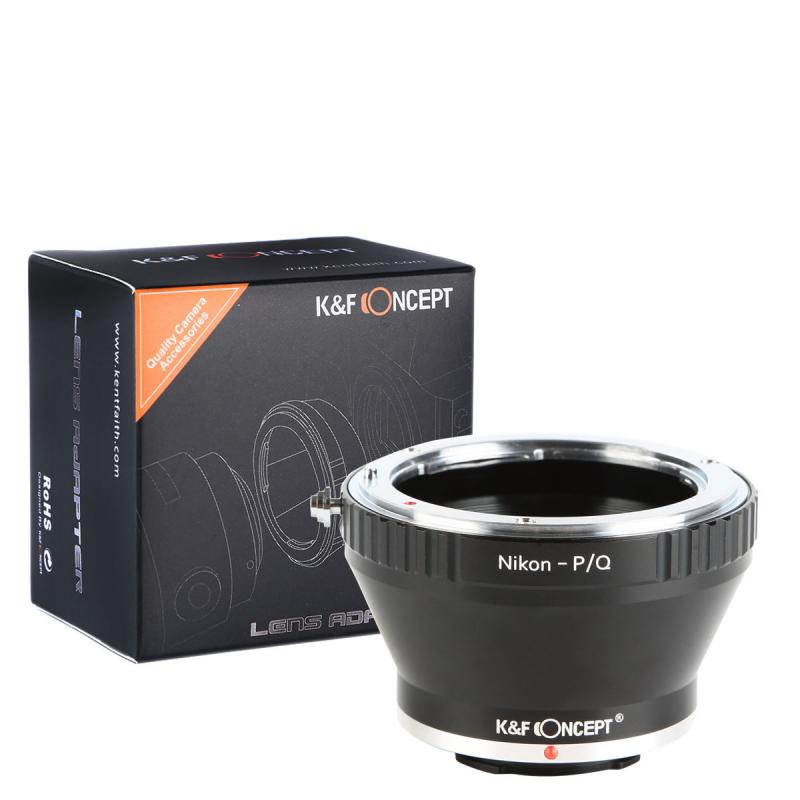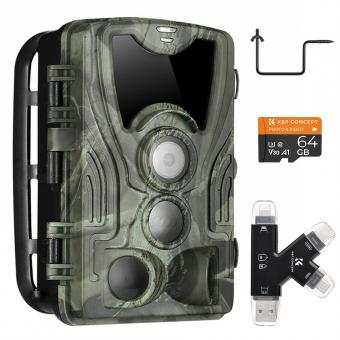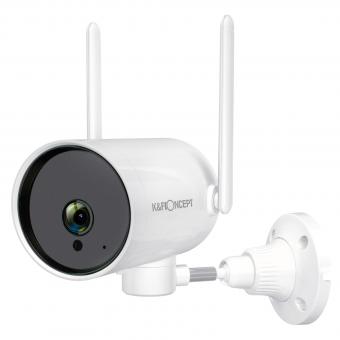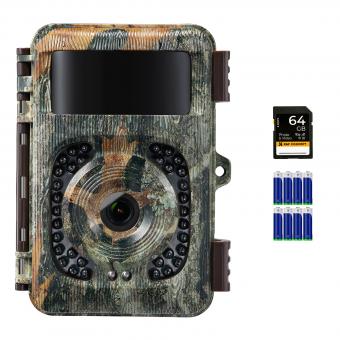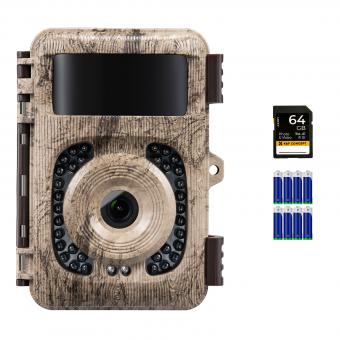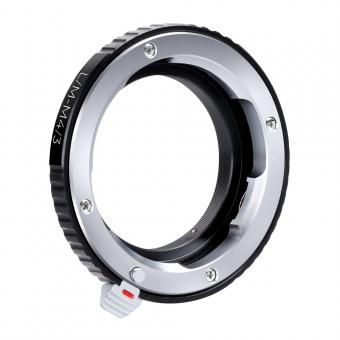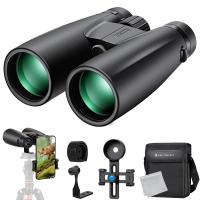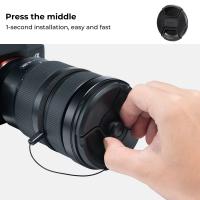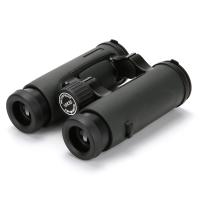How To Connect Ip Camera To Wifi Router ?
To connect an IP camera to a Wi-Fi router, follow these steps:
1. Ensure that your IP camera is powered on and connected to a power source.
2. Use an Ethernet cable to connect the IP camera to the LAN port on your Wi-Fi router.
3. Access your router's configuration page by typing its IP address into a web browser. The default IP address is often printed on the router or mentioned in the user manual.
4. Log in to the router's configuration page using the administrator credentials.
5. Look for the "Wireless" or "Wi-Fi" settings in the router's configuration page.
6. Find the option to add a new device or enable WPS (Wi-Fi Protected Setup) if available.
7. Follow the on-screen instructions to connect the IP camera to your Wi-Fi network. This may involve selecting your network name (SSID) and entering the Wi-Fi password.
8. Once the IP camera is successfully connected to the Wi-Fi network, disconnect the Ethernet cable.
9. Test the connection by accessing the IP camera's live feed using its assigned IP address or through the manufacturer's software.
Note: The exact steps may vary depending on the router and IP camera model. It is recommended to refer to the user manuals or online documentation provided by the manufacturer for detailed instructions.
1、 IP Camera Setup: Connecting to a Wi-Fi Network
IP Camera Setup: Connecting to a Wi-Fi Network
Connecting an IP camera to a Wi-Fi router is a relatively simple process that can be done in a few steps. Here's a guide on how to connect an IP camera to a Wi-Fi router:
1. Ensure that your IP camera is powered on and in a location within range of your Wi-Fi router. Most IP cameras require a power source, so make sure it is plugged in and turned on.
2. Access the camera's settings. This can usually be done by typing the camera's IP address into a web browser on a computer connected to the same network. The IP address can typically be found in the camera's user manual or on the camera itself.
3. Once you have accessed the camera's settings, navigate to the network settings or Wi-Fi settings section. Here, you will need to enter the SSID (network name) and password of your Wi-Fi network. Make sure to double-check the information to avoid any typos.
4. Save the settings and wait for the camera to reboot. This may take a few minutes.
5. After the camera has rebooted, disconnect the camera from the router using an Ethernet cable if it was connected during the setup process. The camera should now be connected to your Wi-Fi network.
It's important to note that the specific steps may vary slightly depending on the brand and model of your IP camera. It's always a good idea to consult the camera's user manual or the manufacturer's website for detailed instructions.
In recent years, some IP cameras have introduced easier setup methods, such as QR code scanning or automatic Wi-Fi configuration. These methods can simplify the process by eliminating the need to manually enter network information. If your camera supports these features, consult the user manual for instructions on how to use them.
Overall, connecting an IP camera to a Wi-Fi router is a straightforward process that can be done by following the camera's setup instructions. By doing so, you can enjoy the convenience of accessing your camera's feed remotely and monitoring your property from anywhere with an internet connection.

2、 Configuring Wi-Fi Settings on an IP Camera
Configuring Wi-Fi settings on an IP camera is a crucial step in ensuring seamless connectivity and remote monitoring. Here's a step-by-step guide on how to connect an IP camera to a Wi-Fi router:
1. Ensure that your IP camera is powered on and connected to the router via an Ethernet cable. This is necessary for initial setup and configuration.
2. Install the camera's software or app on your computer or mobile device. This will allow you to access the camera's settings and configure the Wi-Fi connection.
3. Launch the camera's software or app and locate the Wi-Fi settings. This may be found under the "Network" or "Wireless" section.
4. Select the option to scan for available Wi-Fi networks. The camera should display a list of nearby networks.
5. Choose your Wi-Fi network from the list and enter the network password if prompted. Ensure that the password is entered correctly to avoid any connection issues.
6. Once the camera is connected to the Wi-Fi network, disconnect the Ethernet cable. The camera should now be wirelessly connected to the router.
7. Test the connection by accessing the camera's live feed from your computer or mobile device. If the connection is successful, you should be able to view the camera's feed remotely.
It's important to note that the exact steps may vary depending on the brand and model of your IP camera. Therefore, it's recommended to refer to the camera's user manual or online documentation for specific instructions.
In recent years, some IP cameras have introduced features like WPS (Wi-Fi Protected Setup) for easier Wi-Fi configuration. This allows users to connect the camera to the router with the push of a button, eliminating the need for manual network configuration. However, it's essential to ensure that your router supports WPS and that it is enabled before attempting this method.
Overall, configuring Wi-Fi settings on an IP camera is a relatively straightforward process. By following these steps and referring to the camera's documentation, you can easily connect your IP camera to a Wi-Fi router and enjoy remote monitoring capabilities.

3、 Step-by-Step Guide: Connecting IP Camera to Wi-Fi Router
Step-by-Step Guide: Connecting IP Camera to Wi-Fi Router
Connecting an IP camera to a Wi-Fi router is a relatively simple process that can be done in a few easy steps. Here is a step-by-step guide to help you connect your IP camera to your Wi-Fi router:
1. Ensure that your IP camera is powered on and connected to a power source. Most IP cameras come with a power adapter that needs to be plugged into an electrical outlet.
2. Connect your IP camera to your router using an Ethernet cable. Plug one end of the cable into the Ethernet port on the back of the IP camera and the other end into an available Ethernet port on your router.
3. Once the camera is connected to the router, open a web browser on your computer and enter the IP address of the camera. This IP address can usually be found in the user manual or on the camera itself.
4. You will be prompted to enter a username and password to access the camera's settings. Enter the default username and password, which can also be found in the user manual or on the camera.
5. Once you have accessed the camera's settings, navigate to the network settings section. Here, you will find an option to connect the camera to your Wi-Fi network.
6. Select your Wi-Fi network from the list of available networks and enter the password. Click on the "Connect" button to establish a connection between the camera and your Wi-Fi router.
7. Once the camera is connected to your Wi-Fi network, you can unplug the Ethernet cable and move the camera to its desired location.
It is important to note that the steps may vary slightly depending on the brand and model of your IP camera. It is always recommended to refer to the user manual for specific instructions.
In recent years, some IP cameras have also introduced the option to connect to Wi-Fi networks using a mobile app. This allows for a more convenient setup process, as it eliminates the need to access the camera's settings through a web browser. Simply download the app, follow the on-screen instructions, and connect the camera to your Wi-Fi network.
Overall, connecting an IP camera to a Wi-Fi router is a straightforward process that can be done by following these simple steps. It allows for easy installation and flexibility in camera placement, making it a popular choice for home and business surveillance systems.

4、 Troubleshooting: Connecting IP Camera to Wi-Fi Network
Troubleshooting: Connecting IP Camera to Wi-Fi Network
Connecting an IP camera to a Wi-Fi router can sometimes be a challenging task, but with the right steps and troubleshooting techniques, it can be accomplished successfully. Here is a step-by-step guide on how to connect an IP camera to a Wi-Fi router:
1. Ensure that your IP camera is compatible with your Wi-Fi network. Check the camera's specifications and make sure it supports the same Wi-Fi standard as your router (e.g., 802.11n or 802.11ac).
2. Power on the IP camera and connect it to your router using an Ethernet cable. This will allow you to access the camera's settings and configure the Wi-Fi connection.
3. Access the camera's settings interface by typing its IP address into a web browser. The IP address can usually be found in the camera's user manual or on the camera itself.
4. Once in the camera's settings, navigate to the Wi-Fi or Network section. Here, you will need to enter your Wi-Fi network's SSID (name) and password. Make sure to select the correct security protocol (e.g., WPA2) and encryption type (e.g., AES).
5. Save the settings and disconnect the Ethernet cable from the camera. It should now attempt to connect to your Wi-Fi network. Wait for a few minutes to allow the camera to establish a connection.
6. Check the camera's status LED lights. If they indicate a successful connection, you should be able to access the camera wirelessly using its IP address.
If you encounter any issues during the process, here are some troubleshooting tips:
- Ensure that your Wi-Fi network is functioning properly. Restart your router and check if other devices can connect to it.
- Double-check the SSID and password you entered for the camera. Make sure they are correct and free of any typos.
- Move the camera closer to the router to ensure a strong Wi-Fi signal. Walls and other obstacles can weaken the signal strength.
- Update the firmware of your IP camera to the latest version. Manufacturers often release updates that improve compatibility and connectivity.
Remember, the process of connecting an IP camera to a Wi-Fi router may vary slightly depending on the camera model and manufacturer. Always refer to the camera's user manual for specific instructions.
